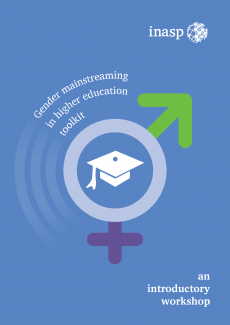
Gender Mainstreaming in Higher Education Toolkit
Download publication files
A participatory approach to identify and address organisational gender gaps.
Developed in partnership with the University of Dodoma in Tanzania, INASP’s Gender Mainstreaming in Higher Education Toolkit provides practical tools and a framework to address organisational gender equality barriers.
- Create a gender action plan to launch a formal gender mainstreaming process within your institution
- Use and adapt our flexible resources for challenging gender inequalities to suit your context and institution type
- Support the development of an open and safe space for participants to share and listen to a diverse range of personal experience and opinion.
Organised around six modules, the toolkit contains materials and resources to run a participatory workshop, guiding participants through a learning journey from gender sensitisation to developing a concrete action plan for addressing organisational gender gaps.
Tried and tested in 20 universities and research institutes
The toolkit has been used in institutions across Ghana, Tanzania, Uganda, Ethiopia and Sri Lanka. Some of the biggest transformations we have seen include:
- The development of gender leadership teams who train and mentor others in their organisation on identifying and challenging gender gaps.
- An increase in the number of women being recruited into senior positions
- The development of strategies to address gender gaps, including equity measures to improve recruitment, the introduction of family-friendly policies and mentoring schemes to support early-career researchers
- The implementation of institutional gender policies; in particular sexual harassment and discrimination policies
- An increase in the confidence of women in the organisation, many of whom now feel empowered to challenge inequities and become role models for the next generation
- The establishment of peer networks and platforms following the workshop
INASP can support your institution to explore gender barriers and facilitate mechanisms and processes to address gender gaps.
